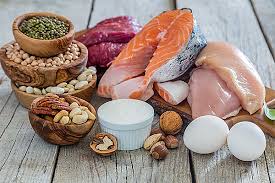Introduction
Protein seems to be all the rage these days. Have you noticed how everything in the grocery store is marketed as “high protein”? I’ve seen protein bars, protein drinks, and even protein popcorn! There is no denying that protein is an essential macronutrient in our diet. Protein is responsible for numerous functions, including building and supporting cells and tissues, fighting infections, breaking down and transporting nutrients, carrying signals and oxygen, and driving the chemical reactions that keep us alive.¹ But how much do we need, and does it matter where it comes from?
How Much Protein Do We Need?
The recommended average amount of protein for adults is 0.8 grams per kilogram of body weight per day.² If you’re wondering what you weigh in kilograms, just divide your weight in pounds by 2.2. This typically increases with increased physical activity.
Keep in mind, this is a general guideline, and everyone’s needs are different. Factors such as age, kidney health, activity level, and underlying medical conditions play a role. Athletes, older adults, or those recovering from illness or injury often require more protein.
Another way to look at it: protein should make up about 10–35% of your total daily calories. My advice? Spread your protein intake across meals throughout the day for the best results, aiming for 25–30 grams of protein per meal.
Now that we know how much protein we need, the next question is: Does it matter where our protein comes from? The short answer is yes—there are differences between protein from plants and protein from animals.
Animal vs. Plant Protein
When people think of protein, they often picture a chicken breast or a steak. And it’s true, animal proteins like meat, poultry, fish, eggs, and dairy are considered “complete proteins.” That means they contain all nine essential amino acids your body can’t make on its own. They are also typically higher in saturated fat.
Plant proteins, on the other hand, are a little different. Foods like beans, lentils, nuts, seeds, and whole grains often provide some, but not all, of the essential amino acids. That’s why they’re sometimes called “incomplete proteins.” But here’s the good news: by eating a variety of plant foods (like rice and beans together, or hummus with whole-grain pita), you can easily cover your bases. Some plant foods, such as soy, quinoa, and buckwheat, are complete proteins all on their own.3
The extra perks of plant proteins? They contain fiber, vitamins, minerals, and other health-boosting compounds, while typically being lower in saturated fat. Since beans, peas, and lentils share nutrients found in both vegetables and protein foods, they can count as either a vegetable or a protein source when working toward your daily recommendations.
Putting It Into Practice
Both plant and animal proteins can be part of a healthy diet; it doesn’t have to be one or the other. Try mixing it up:
– Add beans or lentils to soups and salads.
– Swap Greek yogurt for sour cream.
– Try tofu or edamame in a stir-fry.
– Pair rice and beans for a satisfying plant-based protein boost.
Closing Thought
There is no denying that protein is an essential macronutrient, but I’m not convinced it needs to be on your popcorn, though. Whether it comes from a juicy piece of salmon or a bowl of lentils, getting enough protein helps your body stay strong and energized. This week, try adding one new plant protein to your meals and see how easy (and tasty) it can be!
Wishing you wellness,
Anna Carne, Dietetics Student
Eastern Michigan University
References
1. Clinic C. What Are Proteins? Definition, Types & Examples. Cleveland Clinic. Published June 24, 2025. https://my.clevelandclinic.org/health/body/proteins
2. Clinic C. How Much Protein Do You Need? And How To Get It. Cleveland Clinic. Published June 7, 2024. https://health.clevelandclinic.org/how-much-protein-you-need
3. McGrane K. 13 Complete Protein Sources for Vegetarians and Vegans. Healthline. Published April 21, 2020. Accessed September 29, 2025. https://www.healthline.com/nutrition/complete-protein-for-vegans#peanut-butter-sandwich
4.USDA. Dietary Guidelines for Americans 2020-2025. USDA; 2020. https://www.dietaryguidelines.gov/sites/default/files/2021-03/Dietary_Guidelines_for_Americans-2020-2025.pdf


